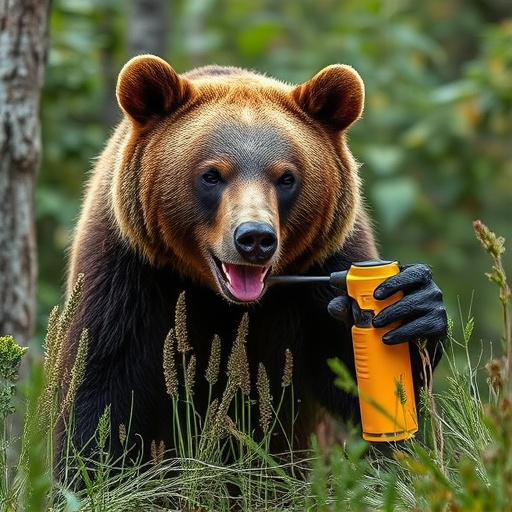Understanding capsaicin oleoresin in bear spray and its burning effect is crucial for safety in bear country. Always face away from potential encounters and consider wind patterns to maximize spray reach and minimize exposure. Aim against the wind for optimal coverage, and practice proper spray techniques. Bear spray serves as a temporary barrier; keep it accessible, test regularly, and use as a last resort alongside other deterrents like noise makers or bear bells.
Bear spray is a vital tool for self-defense against aggressive bears. At its heart lies capsaicin oleoresin, a potent compound derived from chili peppers. Understanding this active ingredient and how wind direction plays a critical role in its effectiveness is key to ensuring bear spray safety. Learn about best practices for usage to make sure you’re prepared when encountering bears in the wild.
- Understanding Capsaicin Oleoresin in Bear Spray
- Wind Direction: A Critical Factor for Safety
- Best Practices for Using Bear Spray Effectively
Understanding Capsaicin Oleoresin in Bear Spray
Capsaicin oleoresin, a key active ingredient found in bear spray, is derived from chili peppers and plays a pivotal role in its effectiveness. This powerful compound is responsible for the burning sensation it causes when sprayed onto an animal’s face, eyes, and respiratory system. Understanding capsaicin oleoresin is essential for ensuring bear spray safety during outdoor adventures in areas known for bear populations.
When using bear spray, understanding wind direction becomes crucial. It dictates where the spray will go and how effectively it will reach the target. Always ensure you’re facing away from potential bear encounters when applying bear spray, considering the wind’s direction to maximize its active ingredients’ impact while minimizing your exposure.
Wind Direction: A Critical Factor for Safety
The wind direction plays a critical role in ensuring bear spray safety during encounters with wild bears. Understanding this factor is essential for those venturing into bear country, as it can significantly impact the effectiveness and range of your bear spray. When applying bear spray, aiming against the wind gives you the best chance of covering yourself and creating a barrier between you and the bear. If you’re spraying into the wind, the protective aerosol might disperse too quickly or not reach the bear effectively, leaving you vulnerable.
Knowing local weather patterns and being mindful of wind direction can help hikers, campers, and outdoor enthusiasts stay safe. It’s crucial to practice proper spray techniques and always carry bear spray when venturing in areas known for bear activity. By considering the wind, individuals can enhance their safety measures and reduce potential risks during encounters with these powerful animals.
Best Practices for Using Bear Spray Effectively
Using bear spray effectively requires adhering to best practices that enhance safety and ensure its potency. Always remember the wind direction before deploying—aim for upstream or upwind, away from your face and potential bear targets. Spraying into the wind can reduce the reach of capsaicin oleoresin, the active ingredient known for its irritant effect on bears. Bear spray is designed to create a temporary barrier, giving you valuable time to retreat; however, it’s not a foolproof defense against aggressive encounters.
Safety precautions include ensuring your bear spray is readily accessible, regularly testing its functionality, and understanding that it should only be used as a last resort. In areas known for bear activity, carrying bear spray alongside other deterrents like noise makers or bear bells can significantly reduce risk. Remember, the key to bear spray safety is preparation, knowledge of local conditions, and being ready to respond calmly and decisively when faced with potential encounters.
Bear spray, a vital tool for personal safety in bear country, relies on capsaicin oleoresin as its active ingredient. Understanding this potent chemical and being aware of wind direction are key factors for effective use and enhanced safety while navigating potentially dangerous encounters with bears. By following best practices, individuals can maximize the protection offered by bear spray, ensuring a safer experience when outdoors in areas inhabited by these majestic yet unpredictable animals.
